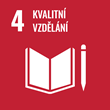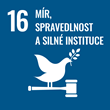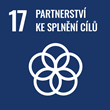
Informace o projektu
Continuity and Rupture in Central European Art and Architecture, 1918-1939 — CRAACE
(CRAACE)

- Kód projektu
- 786314
- Období řešení
- 4/2019 - 2/2024
- Investor / Programový rámec / typ projektu
-
Evropská unie
- Horizon 2020
- ERC (Excellent Science)
- Fakulta / Pracoviště MU
-
Filozofická fakulta
- Matthew Rampley, B.A., Ph.D.
- Mgr. Marta Filipová, Ph.D.
- Julia Secklehner, M.Phil., Ph.D.
- Nóra Veszprémi, Ph.D.
When new political elites and social structures emerge out of a historical rupture, how are art and architecture affected? In
1918 the political map of central Europe was redrawn as a result of the collapse of Austria-Hungary, marking a new era for
the region. Through comparative analysis of the visual arts in 3 states built on the ruins of the Habsburg Empire (Austria,
Hungary and [former] Czechoslovakia), this project examines how such political discontinuity affected art and architecture
between 1918 and 1939. The project is organised into 4 themes, each resulting in a monograph:
1. Vernacular modernisms, nostalgia and the avant-garde
2. Presenting the state: world fairs and exhibitionary cultures
3. Piety, reaction and renewal
4. Contested histories: monuments, memory and representations of the historical past
It is the first systematic and comprehensive trans-national study of this type, based on the claim that the successor states
to Austria-Hungary belonged to a common cultural space informed by the shared memory of the long years of Habsburg
society and culture. The project focuses on the contradictory ways that visual arts of artists and architects in central Europe
adapted to and tried to shape new socio-political circumstances in the light of the past. The project thus examines the long
shadow of the Habsburg Empire over the art and culture of the twentieth century.
The project also considers the impact of the political and ideological imperatives of the three successor states on the visual
arts; how did governments treat the past? Did they encourage a sense of historical caesura or look to the past for
legitimation? How did artists and architects respond to such new impulses? In answering these questions the project
analyses the conflicts between avant-gardes and more conservative artistic movements; the role of the visual arts in
interwar memory politics; the place of art in the nexus of religion, national and state identity.
Cíle udržitelného rozvoje
Masarykova univerzita se hlásí k cílům udržitelného rozvoje OSN, jejichž záměrem je do roku 2030 zlepšit podmínky a kvalitu života na naší planetě.
Publikace
Počet publikací: 188
2021
-
The theatre of exhibitions : Czechoslovakia at the International Exhibition in Paris, 1937
Journal of Design History, rok: 2021, ročník: 35, vydání: 11, DOI
-
Uncovering diversity: visual representations of Czechoslovakia’s multi-ethnic heritage
Rok: 2021, druh: Další prezentace na konferencích
-
Unsettling Heimat and the Touristic Ideal : Tropes of the Uncanny in Lois Hechenblaikner's Anti-Heimat Photography
Austrian Studies, rok: 2021, ročník: 29, vydání: 1, DOI
-
Výstavní divadlo. Aranžmá meziválečných výstav pomocí divadelních metod
Rok: 2021, druh: Další prezentace na konferencích
-
Whose Landscape Is It? Remapping Memory and History in Interwar Central Europe
Austrian History Yearbook, rok: 2021, ročník: 52, vydání: Léto 2021, DOI
-
Women and the Wiener Werkstätte
Rok: 2021, druh: Recenze
-
Women of the Viennese Workshops: Exhibition review
Rok: 2021, druh: Popularizační texty
2020
-
Another Modernism? Clemens Holzmeister, Josef Frank, and the Architecture of Interwar Vienna’
Umění a evoluce / Art and Evolution, rok: 2020
-
Artwork of the Month, April 2020: Columbus in der Slovakei by Leopold Wolfgang Rochowanski
Rok: 2020, druh: Popularizační texty
-
Artwork of the Month, February 2020: The Highway Sings by Elmar Klos, Jan Lukas and Alexander Hackenschmied (1937)
Rok: 2020, druh: Popularizační texty




